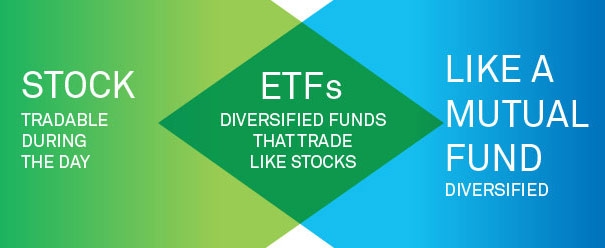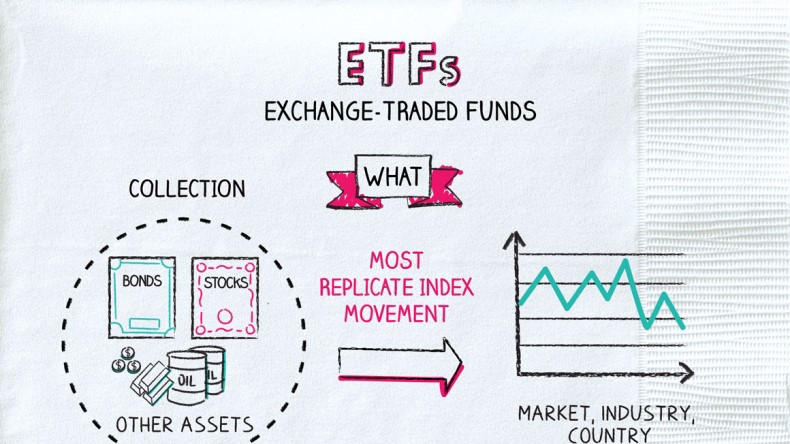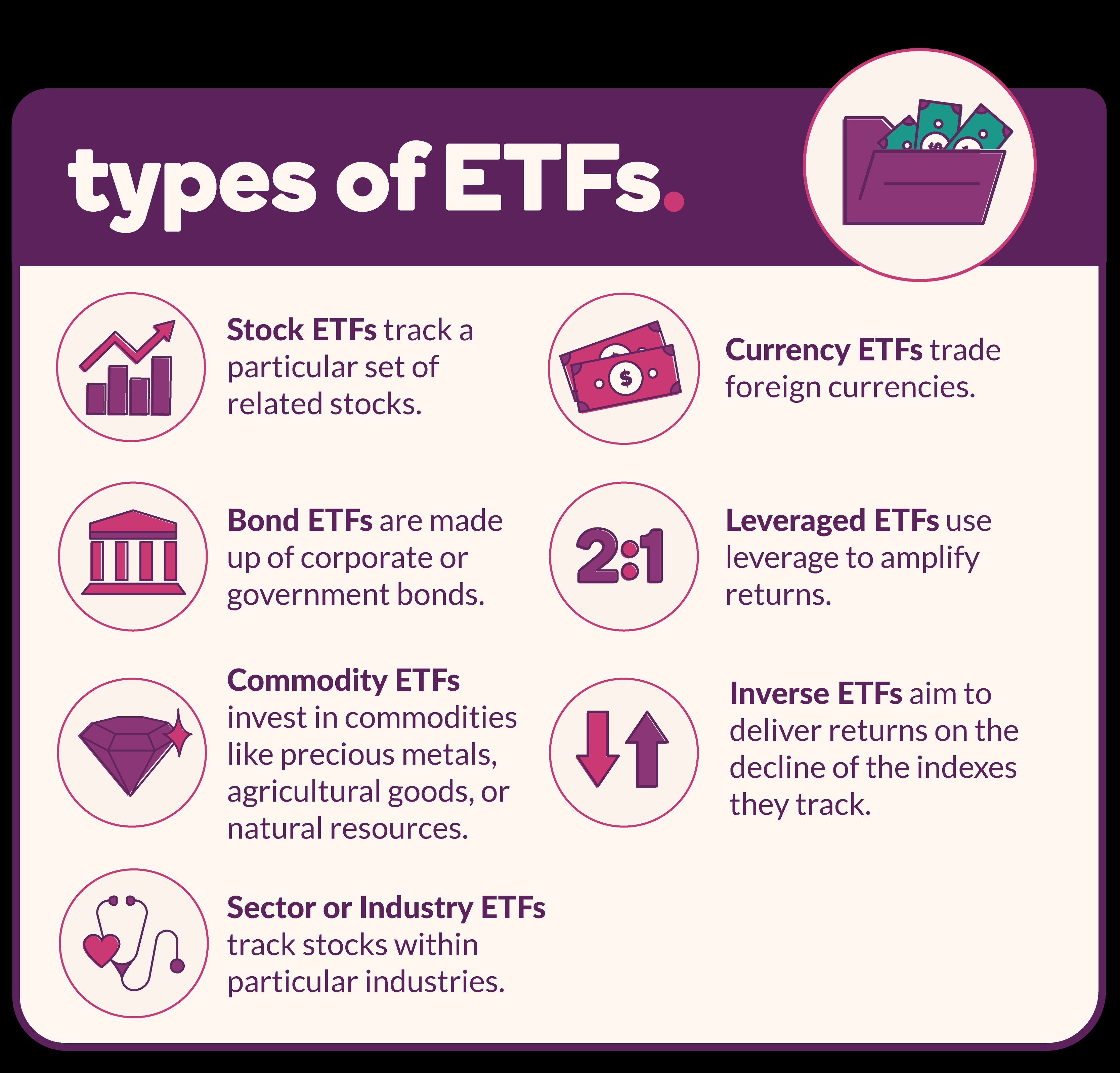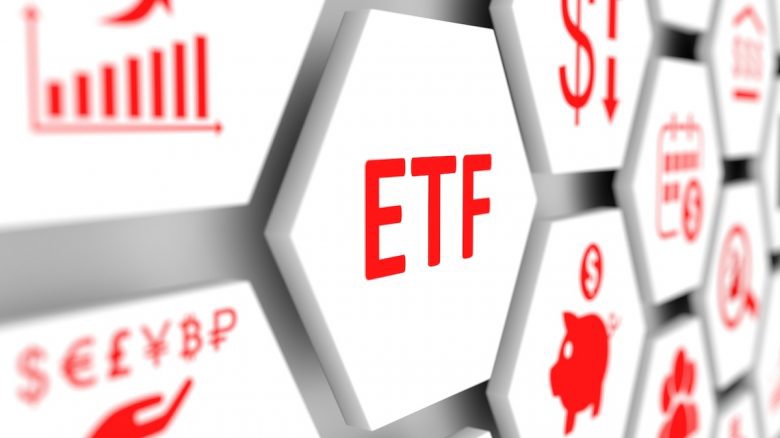Exchange-traded funds, or ETFs, are an easy way to begin investing. ETFs are fairly simple to understand and can generate impressive returns without much expense or effort. Here’s what you should know about ETFs, how they work, and how to buy them.
What is an ETF?
An exchange-traded fund, or ETF, allows investors to buy many stocks or bonds at once. Investors buy shares of ETFs, and the money is used to invest according to a certain objective. For example, if you buy an S&P 500 ETF, your money will be invested in the 500 companies in that index.
ETFs vs. mutual funds
One common question is how ETFs differ from mutual funds since the basic principle is the same.
The key difference between these two types of investment vehicles is how you buy and sell them. Mutual funds are priced once per day, and you typically invest a set dollar amount. Mutual funds can be purchased through a brokerage or directly from the issuer, but the key point is that the transaction is not instantaneous.
On the other hand, ETFs trade just like stocks on major exchanges such as the NYSE and Nasdaq. Instead of investing a set dollar amount, you choose how many shares you want to purchase. Because they trade like stocks, ETF prices continuously fluctuate throughout the trading day, and you can buy shares of ETFs whenever the stock market is open.
Understanding ETF basics
Before we get any further, there are a few concepts that are important to know before you buy your first ETFs.
Passive vs. active ETFs: There are two basic types of ETFs. Passive ETFs (also known as index funds) simply track a stock index, such as the S&P 500. Active ETFs hire portfolio managers to invest their money. The key takeaway: Passive ETFs want to match an index’s performance. Active ETFs want to beat an index’s performance.
Expense ratios: ETFs charge fees, known as the expense ratio. You’ll see the expense ratio listed as an annual percentage. For instance, a 1% expense ratio means that you’ll pay $10 in fees for every $1,000 you invest. All things being equal, a lower expense ratio will save you money.
Dividends and DRIPs: Most ETFs pay dividends. You can choose to have your ETF dividends paid to you as cash, or you can choose to have them automatically reinvested through a dividend reinvestment plan, or DRIP.
Understanding ETF taxes
If you buy ETFs in a standard brokerage account (not an IRA), you should know that they could result in taxable income. Any gains you make from selling an ETF will be taxed according to capital gains tax rules, and any dividends you receive will likely be taxable as well.
Of course, if you invest in ETFs through an IRA, you won't have to worry about capital gains or dividend taxes. In a traditional IRA, money in the account is only considered taxable income after it is withdrawn, while Roth IRA investments aren't taxable at all in most cases.
How much money do you need to be able to invest in ETFs?
ETFs don’t have minimum investment requirements- at least not in the same sense that mutual funds do. However, ETFs trade on a per-share basis, so unless your broker offers the ability to buy fractional shares of stock, you’ll need at least the current price of one share to get started.
Pros and Cons of ETFs
Advantages to investing in ETFs:
1. ETFs provide exposure to a variety of stocks, bonds, and other assets, typically at a minimal expense.
2. ETFs take the guesswork out of stock investing. They allow investors to match the market’s performance over time, which has historically been quite strong.
3. ETFs are more liquid (easy to buy and sell) than mutual funds. Online brokers make it easy to buy or sell ETFs with a simple click of the mouse.
4. It can be extremely complicated to invest in individual bonds, but a bond ETF can make the fixed-income portion of your portfolio very easy.
Potential drawbacks of ETFs:
Since ETFs own a diverse assortment of stocks, they don’t have quite as much return potential as buying individual stocks.
ETFs are often low-cost, but they aren’t free. If you buy a portfolio of individual stocks on your own, you won’t have to pay any management fees.
How to start investing in ETFs
1. Open a brokerage account.
2. Choose your first ETFs.
3. Let your ETFs do the hard work for you.
ETF Examples: 10 of the Best ETFs for Beginners
Vanguard S&P 500 ETF (NYSEMKT:VOO) -- Large U.S. companie$Vanguard S&P 500 ETF(VOO)$
Schwab U.S. Mid-Cap ETF (NYSEMKT:SCHM) -- Midsize U.S. companie$Schwab U.S. Mid-Cap ETF(SCHM)$
Vanguard Russell 2000 ETF (NYSEMKT:VTWO) -- Smaller U.S. companie$Vanguard Russell 2000 ETF(VTWO)$
Schwab International Equity ETF (NYSEMKT:SCHF) -- Larger non-U.S. companies
Schwab Emerging Markets Equity ETF (NYSEMKT:SCHE) -- Companies from countries with developing economies
Vanguard High-Dividend ETF (NYSEMKT:VYM) -- Stocks that pay above-average dividends
Schwab U.S. REIT ETF (NYSEMKT:SCHH) -- Real estate investment trusts
Schwab U.S. Aggregate Bond ETF (NYSEMKT:SCHZ) -- Bonds of all different varieties and maturity lengths
Vanguard Total World Bond Fund (NASDAQ:BNDW) -- Includes international bonds as well as U.S. bonds of various lengths and maturities.
Invesco QQQ Trust (NASDAQ:QQQ) - Tracks the Nasdaq-100 Index, which is heavy on tech and other growth stocks.
You might notice that this list is heavy on Vanguard and Schwab. There’s a good reason for this: Both are dedicated to offering Americans access to the stock market at a minimal expense, so ETFs from both tend to be among the cheapest in the business.
It’s important to keep in mind that ETFs are generally designed to be maintenance-free investments.
Newer investors tend to have a bad habit of checking their portfolios far too often, and making emotional, knee-jerk reactions to major market moves. In fact, the average fund investor significantly underperforms the market over time, and over-trading is the main reason. So, once you buy shares of some great ETFs, the best advice is to leave them alone and let them do what they’re intended to do: produce excellent investment growth over long periods of time.





Comments